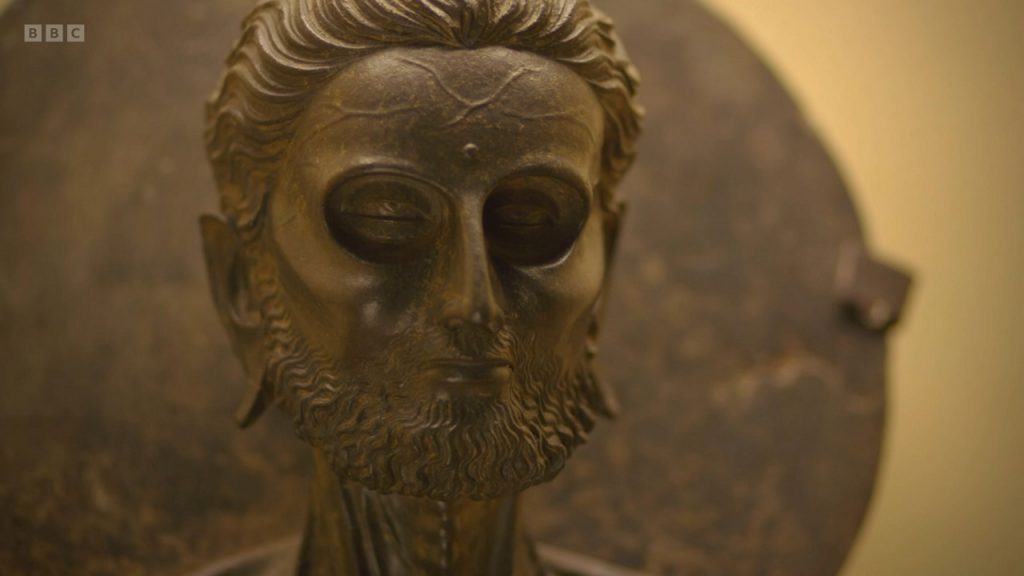Treasures of the Indus – Of Gods and Men: In a journey across the southern Indian state of Tamil Nadu, Sona Datta traces the development of the Hindu religion from its origins as an amalgamation of local faith traditions to its dominant position today.
She uncovers this fascinating tale by looking at the buildings in which the faith evolved, moving from the caves and rock temples on the shores of the Bay of Bengal at Mahabalipurem, through the monolithic stone temple at Tanjavur to the vast complex of ornately carved towers, tanks and courtyards at Madurai, where every evening the god Shiva processes around the precincts to visit the bedchamber of his partner Parvati.The story of the Indian sub-continent told through the treasures that have shaped the modern Indian world.
Treasures of the Indus – Of Gods and Men
Indus River
The Indus is a transboundary river of Asia and a trans-Himalayan river of South and Central Asia. The 3,180 km (1,980 mi) river rises in Western Tibet, flows northwest through the disputed region of Kashmir, bends sharply to the left after the Nanga Parbat massif, and flows south-by-southwest through Pakistan, before emptying into the Arabian Sea near the port city of Karachi.
The river has a total drainage area exceeding 1,165,000 km2 (450,000 sq mi). Its estimated annual flow is around 243 km3 (58 cu mi), making it one of the 50 largest rivers in the world in terms of average annual flow. Its left-bank tributary in Ladakh is the Zanskar River, and its left-bank tributary in the plains is the Panjnad River which is formed by the successive confluences of the five Punjab rivers, namely the Chenab, Jhelum, Ravi, Beas, and Sutlej rivers. Its principal right-bank tributaries are the Shyok, Gilgit, Kabul, Kurram, and Gomal rivers. Beginning in a mountain spring and fed with glaciers and rivers in the Himalayan, Karakoram, and Hindu Kush ranges, the river supports the ecosystems of temperate forests, plains, and arid countryside.
Hinduism – Treasures of the Indus
Hinduism is variously defined as an Indian religion, a set of religious beliefs or practices, a religious tradition, a way of life, or dharma—a religious and universal order by which followers abide. As a religion it is the world’s third-largest, with over 1.2 billion followers, or 15–16% of the global population, known as Hindus. The word Hindu is an exonym, and while Hinduism has been called the oldest religion in the world, many practitioners refer to their religion as Sanātana Dharma (Sanskrit: सनातन धर्म, lit. ”the Eternal Dharma”), a modern usage, which refers to the idea that its origins lie beyond human history, as revealed in the Hindu texts. Another endonym is Vaidika dharma, the ‘dharma related to the Vedas.
Hinduism is a diverse system of thought marked by a range of philosophies and shared concepts, rituals, cosmological systems, pilgrimage sites, and shared textual sources that discuss theology, metaphysics, mythology, Vedic yajna, yoga, agamic rituals, and temple building, among other topics. Prominent themes in Hindu beliefs include the four Puruṣārthas, the proper goals or aims of human life; namely, dharma (ethics/duties), artha (prosperity/work), kama (desires/passions) and moksha (liberation/freedom from the passions and the cycle of death and rebirth), as well as karma (action, intent and consequences) and saṃsāra (cycle of death and rebirth).
Hinduism prescribes the eternal duties, such as honesty, refraining from injuring living beings (Ahiṃsā), patience, forbearance, self-restraint, virtue, and compassion, among others. Hindu practices include rituals such as puja (worship) and recitations, japa, meditation (dhyāna), family-oriented rites of passage, annual festivals, and occasional pilgrimages. Along with the practice of various yogas, some Hindus leave their social world and material possessions and engage in lifelong Sannyasa (monasticism) in order to achieve moksha.
